Considering the handling, packaging, storing and transportation of cultural heritage materials during the digitisation process is an important aspect of preserving the integrity and condition of your collections. These considerations will be discussed throughout this resource where we offer our experience and recommendations for digitisation technicians and curators to refer to primarily in the context of handling cultural heritage material during a digitisation process.
Methods for handling cultural heritage objects are largely dependent on the material type and its condition, these can vary considerably in cultural heritage collections. The following types of material will be discussed in this resource: artwork, photographic material, archival material (documents, manuscripts, records, etc.), taonga, textiles, audio-visual and three-dimensional (3D) objects.
The recommendations in this resource are a guide only, we strongly recommend you consult with the owner of the material you are handling to ensure any handling requirements are met and upheld by you and your team.
Handling
It is important for a handling policy to be developed and applied to any collection or workplace that cares for cultural heritage materials. Having clear, considered guidelines in place is important in achieving consistency and best practice. As a starting point, consider the spatial area and environs you have when handling cultural heritage material. Even if there is limited space, planning can greatly decrease the risk of damage.
Environment
In terms of your workspace:
- Make sure it is clean and tidy.
- Assess the workspace for potential hazards such as cords, overhanging objects (including pipes and sprinkler heads), trip hazards, sharp or jagged edges, moisture, tight spaces, etc.
- Remove items that could be damaging, e.g., if you need to take notes, use a pencil instead of a pen (conservators generally recommend a 2B pencil).
- Make sure no liquids or foods are around you.
- Where appropriate, put in place supports for items such as cushions or even just pad the table you are working on (bubble wrap covered in unbleached calico can work well).
- Plan your transport route prior to shifting items, identifying hazards along the way. Make sure doors can be opened whilst the item is still supported appropriately, generally on a trolley. This is especially important if the item is large and you cannot see in front of your feet while walking to identify objects, stairs or other trip hazards. If you are going outdoors for example, make sure your item is packed to cope with rain and wind, even if it is a sunny day. You may also consider shockproofing the item using card or foam.
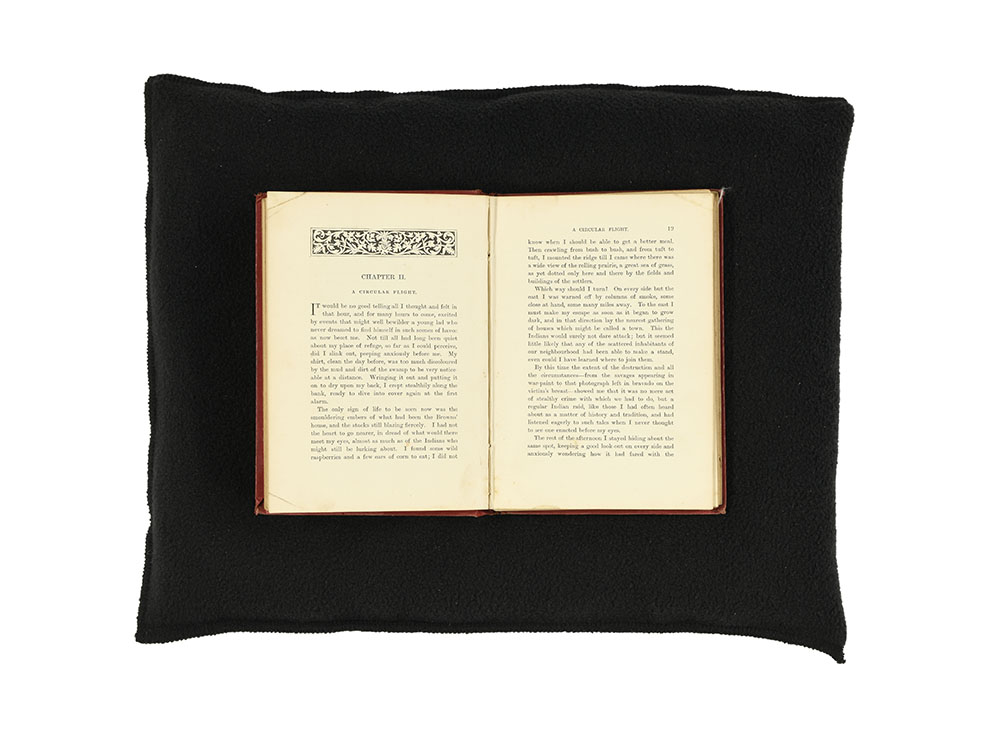
Personal Protective Equipment (PPE)
PPE should also be considered, particularly with social history collections, as they can have numerous hazards. Items such as taxidermy, cloaks, nitrate / acetate photographic negatives, and biological material can be hazardous to handlers. Where there are potential chemical or airborne hazards, it is advised that the area is ventilated, masks are worn in addition to suitable gloves. When moving crates, steel cap boots should be worn to lower risk of injury. Where grip is required, wear nitrile gloves – cotton gloves can increase risk to the objects through being slippery or snagging on items.
Personal Attire
Ensure that you remove all rings and jewellery that may catch on the material and cause damage. Wear suitable clothing that is not loose fitting and remove any scarves or items of clothing that could interfere with the safe handling of the object.
Be aware of makeup and touching your face while you are handling material as coloured smudges could transfer from your gloved hand to the material.
Gloves
Gloves should be worn when handling certain cultural material, especially photographic ephemera and hazardous items. Paper based materials such as books may be fine to handle with just clean hands as gloves inhibit the handler’s sense of touch which may increase risk to the object if they struggle to turn pages safely. Here at NZMS, we discuss handling options with our clients and ensure gloves are worn where requested. Where they are required, make sure they are powder-free, nitrile is becoming the preferred glove type, although many people still prefer cotton gloves. However, the latter can reduce the dexterity of the wearer and can thus further inhibit handling compared to well-fitting nitrile gloves (e.g. turning brittle or torn pages).
If items are particularly hazardous (especially sharp) consider using thicker gloves (like those worn by gardeners or tradesmen) on top of nitrile gloves. Always wear gloves for photographic material, audio-visual (when touching the tape), textiles, biological specimens, hazardous items. Sometimes wear gloves for archival material, ceramics/glass (gloves can make increase risk of dropping – wear nitrile if you wish), taonga (consult with a relevant Māori advisor). If you are not sure, always consult with the owner of the item.
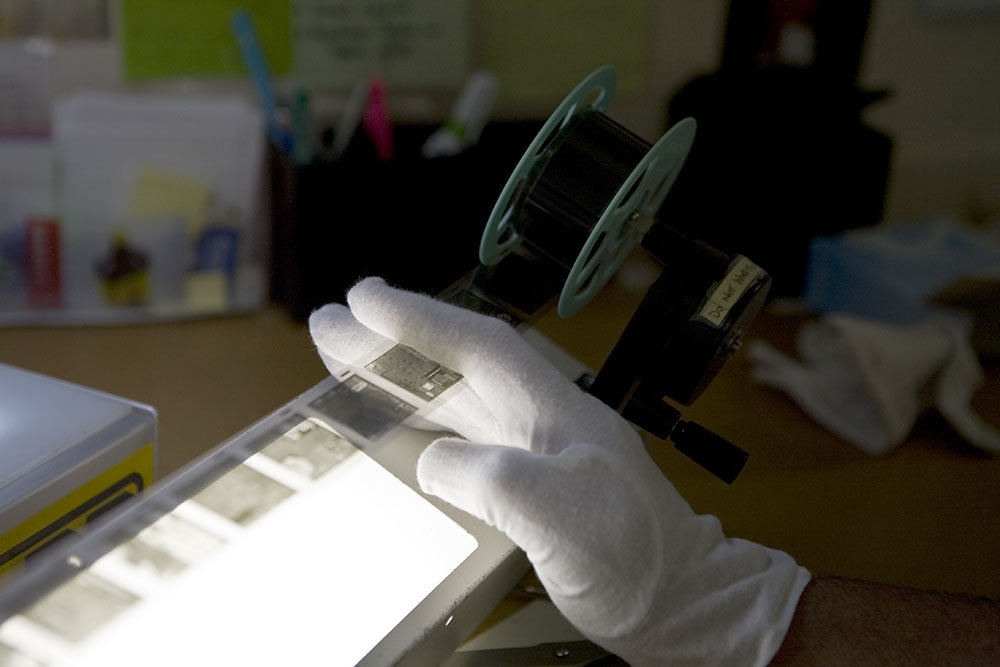
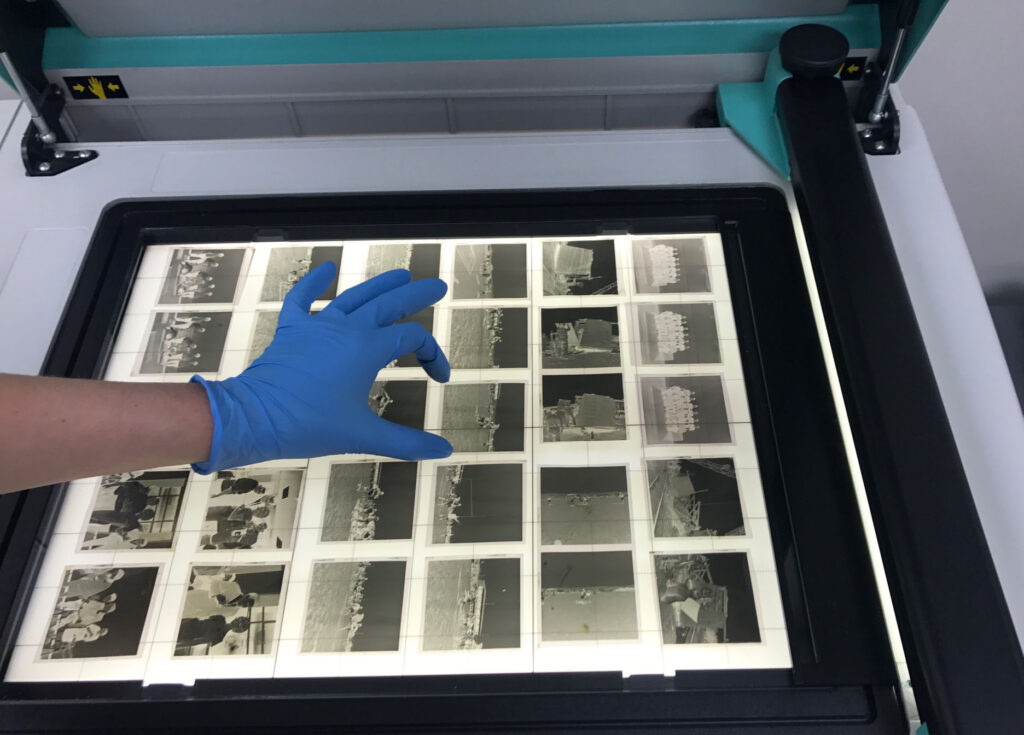
2D Books, Documents, Maps and Plans
When turning pages be aware of the fragility of the item, take your time and be as gentle as possible. Turning the page from the centre–edge will reduce risk of tearing as it is less used, less exposed and therefore generally less brittle. Where the pages are quite brittle, do not attempt to remedy creases, folds or dog-ears unless they are obscuring information. Where material is very fragile we recommend the use of ‘paper fingers’ to support page turning. This reduces the risk of potentially damaging the material when you are trying to grasp a page while wearing gloves.
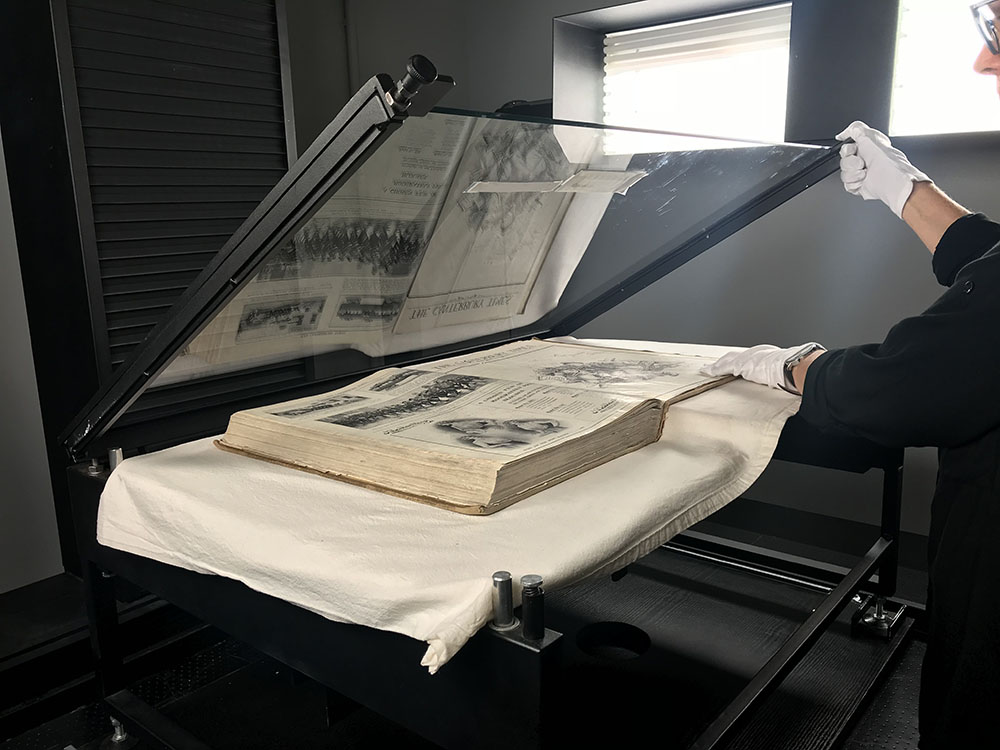
Photographic Material
Processed photos on photographic paper should be handled by the edges ensuring not to touch the surface of the photo.
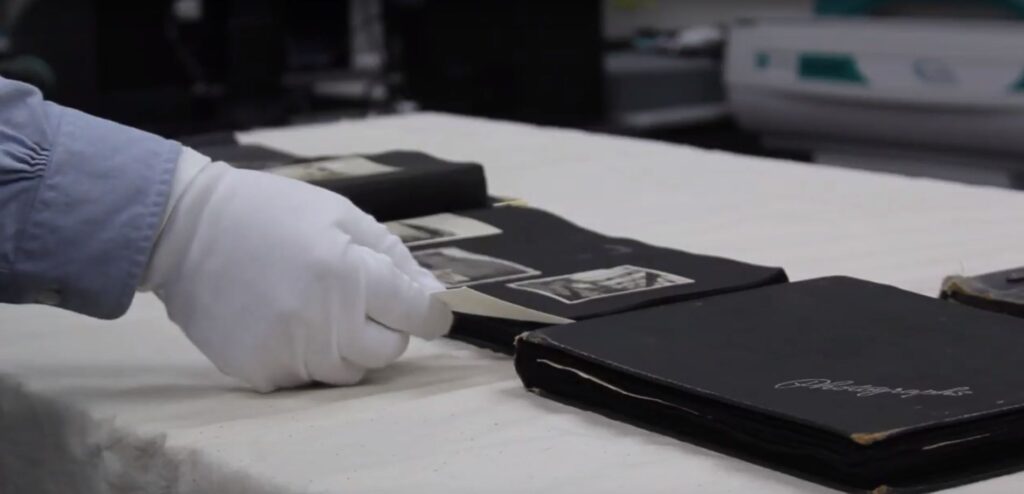
Film, negatives, slides and glass plates – the general rule is to avoid touching the emulsion (matte side) of the material as handling may mark the item and even delaminate the image from the substrate. We recommend using a blower brush to remove any dust or detritus from photographic material before handling and digitising.
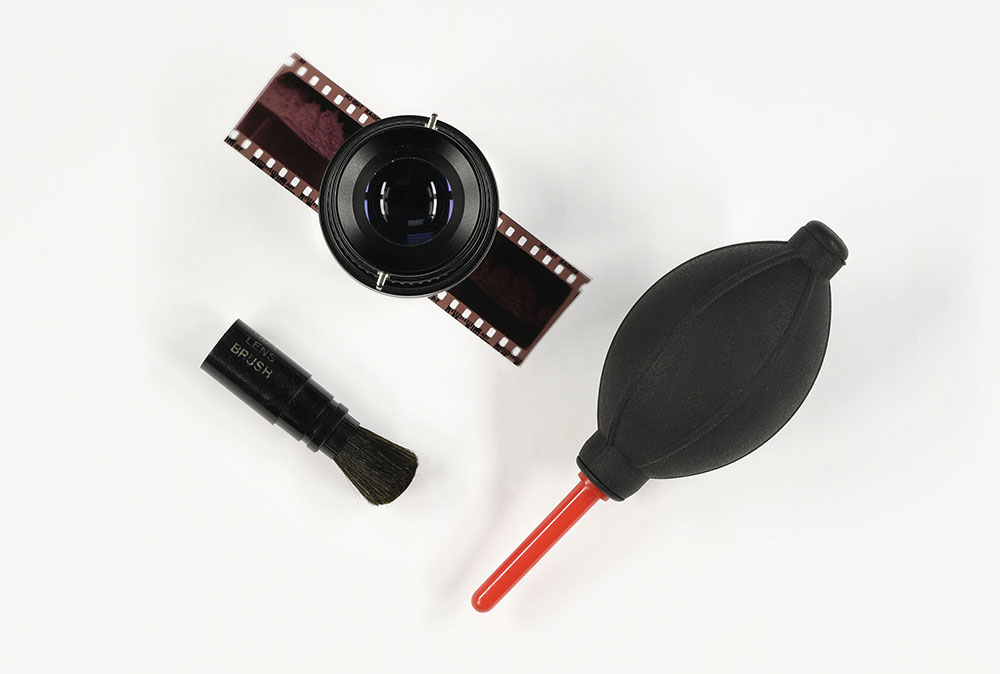
3D Objects
When handling, moving and resting items, their weakest points should be supported, and items should only be shifted by their strongest points i.e. the base of pottery (not spouts or handles), the bottoms and sides of frames with artworks (not the top or the string).
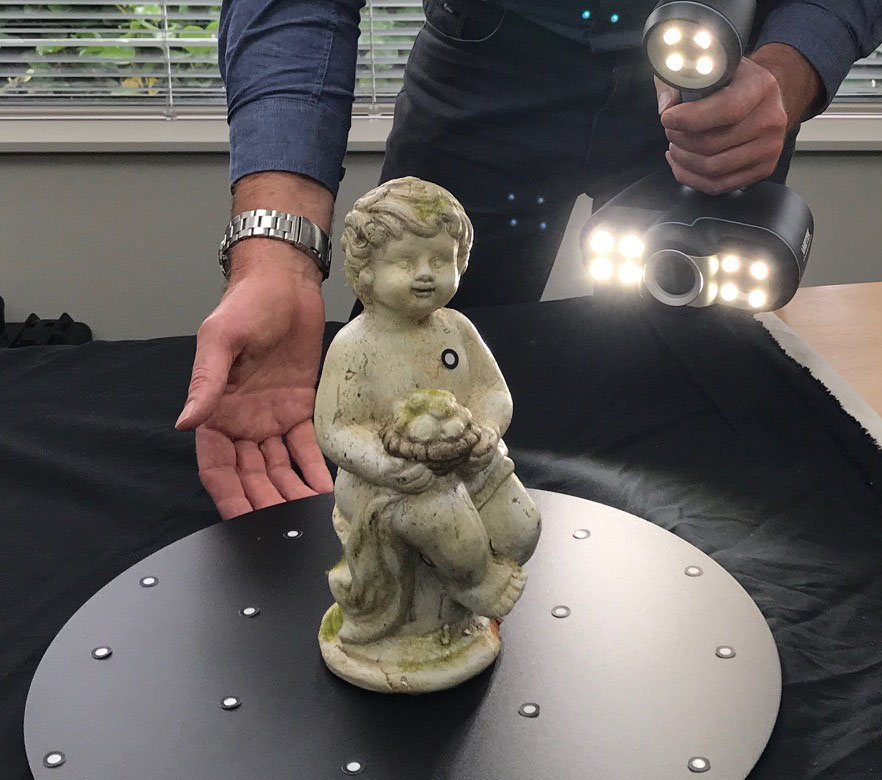
Analogue audio and video (AV)
AV formats are prone to degradation and should be handled with care. Due to the volatile nature of the materials involved, and their susceptibility to damage, it is vital to thoroughly assess AV items prior to digitisation. Magnetic tape should be handled as little as possible and always using lint-free gloves; frequent access exposes tapes to physical damage and wear from machines, contamination by dust and dirt, and adverse environmental conditions from light and moisture.
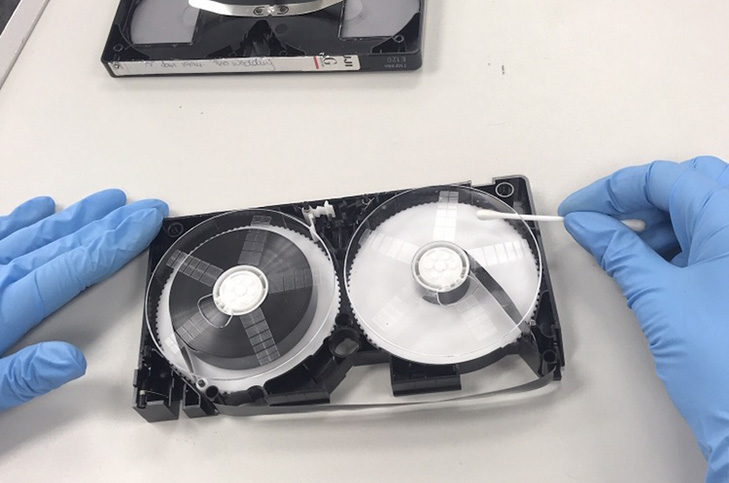
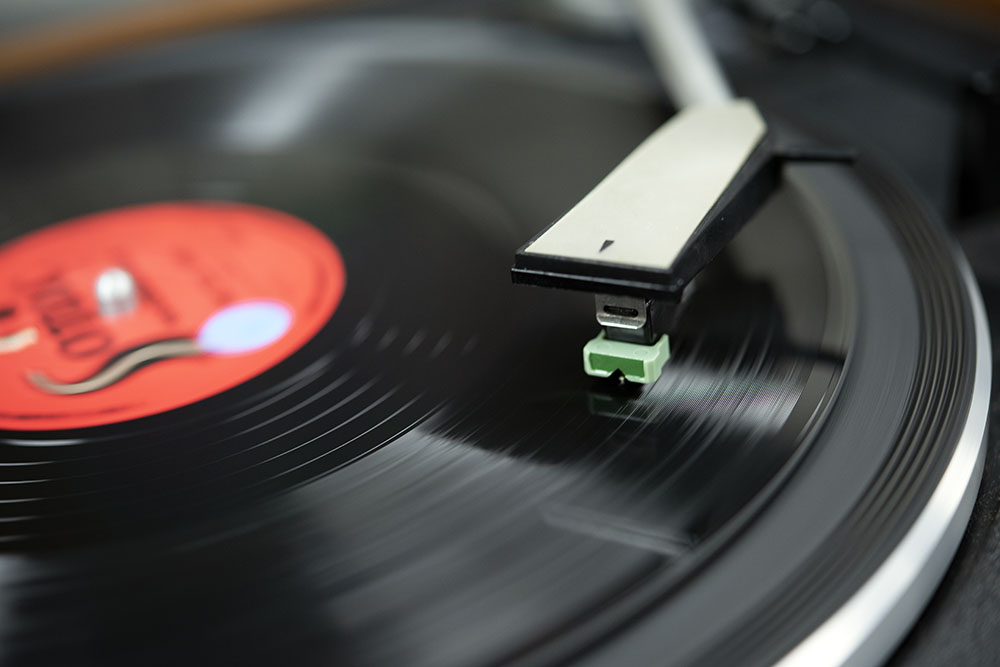
Taonga, and cultural considerations
If an item is considered taonga, or culturally sensitive in any way, it is best to consider the purpose for handling, and keep in mind the wishes of relevant iwi and hapū or interested parties related to the item (where known). Tikanga (Māori protocol) cannot be generalised as there is not one voice, but many. In some cultures, it is inappropriate for certain people to handle certain items. For objects which are tapu (sacred) part of the consultation process may include a blessing by a local Kaumātua (Māori elder). Our best advice is to be respectful and seek guidance, do not assume, no matter how experienced or proficient you are in the general practices and processes.
Storage
Atmosphere / Environs
Ideally, all cultural heritage materials would be stored in temperature and humidity-controlled environments appropriate to their format. While this is often not attainable, assessing where in a building objects are stored can help to lower the risk to collections. For example, it is best to avoid using rooms with external walls or windows as they have the biggest temperature and humidity variations.
To help prevent atmosphere and environmental damage to objects, use dehumidifiers where it is too humid, or humidifiers where it is too dry and avoiding (especially natural) light in rooms housing collection items. A general rule is to avoid fluctuations in temperature or humidity as they can cause more damage than a consistent and stable alternative.
When your material is included in exhibitions or displays ensure you have appropriate restraints and protection in place such as stands, plinths, holders, protective glass, etc. Appropriate display lighting also varies depending on the material of the item. Different types of items require different environmental conditions, and this may require monitoring, something to consider if your material will be out of storage and on display during an exhibition.
When preparing items for transit, try to ensure the storage environment is as stable as possible. Ensure items are covered in waterproof packaging in case of rain. Even where items are covered, try to avoid direct sunlight onto them; where possible transport items on an overcast day (especially if they are sensitive e.g. degrading film). Allow crates time to acclimatise when storage / environmental conditions change during transit.
Storage by Material Type
Items should generally be stored in the orientation and method that best supports and protects them. The following recommendations offer a general synopsis for each material type.
2D Books, Documents, Maps and Plans
2D Archival material is usually best stored flat with acid-free tissue/paper/card separating items as appropriate. Except for plans and maps that may have been rolled up for many years and could be damaged if you try to flatten them out. Paper corners can be used to support the corners, particularly if you need to back the item. It can then be stored in acid-free card (or fluted polypropylene) boxes or in drawers. When putting boxes into shelving, or on tables, keep the stacking to a minimum and ensure there is no overhang from the shelf.
- Flat items such as fragile sheet (A4-A0) documents or maps should be transported between workstations on a supporting board or box making sure the papers cannot float off with air movement or slippage.
- Manuscripts or books should have acid free tissue between pages where plates appear or where there is text that could bleed onto adjacent pages over time.
- Items should be separated so as not to snag or affect each other. This can be done at a box, envelope, or sheet (of tissue) level.
- Do not put tissue directly onto tacky surfaces e.g. oil or wet paint, as it can stick to and / or remove the surface of the artwork.
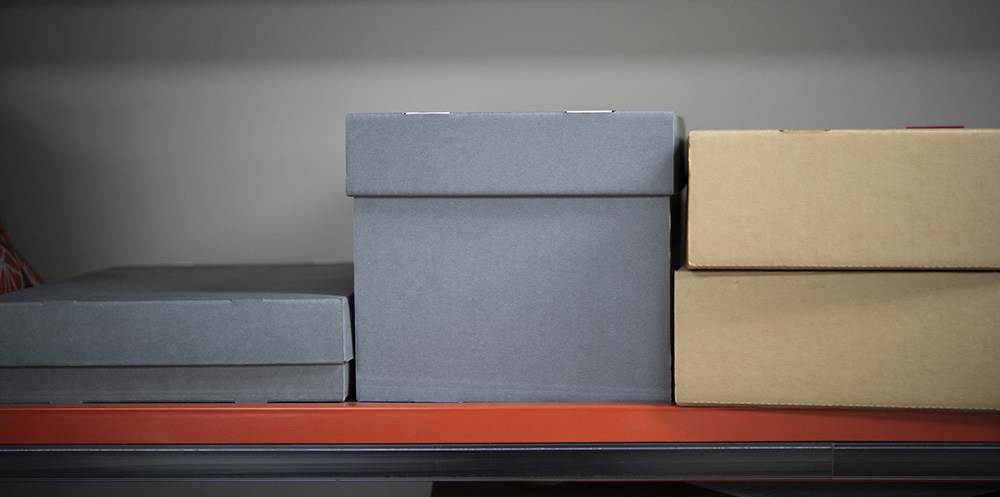
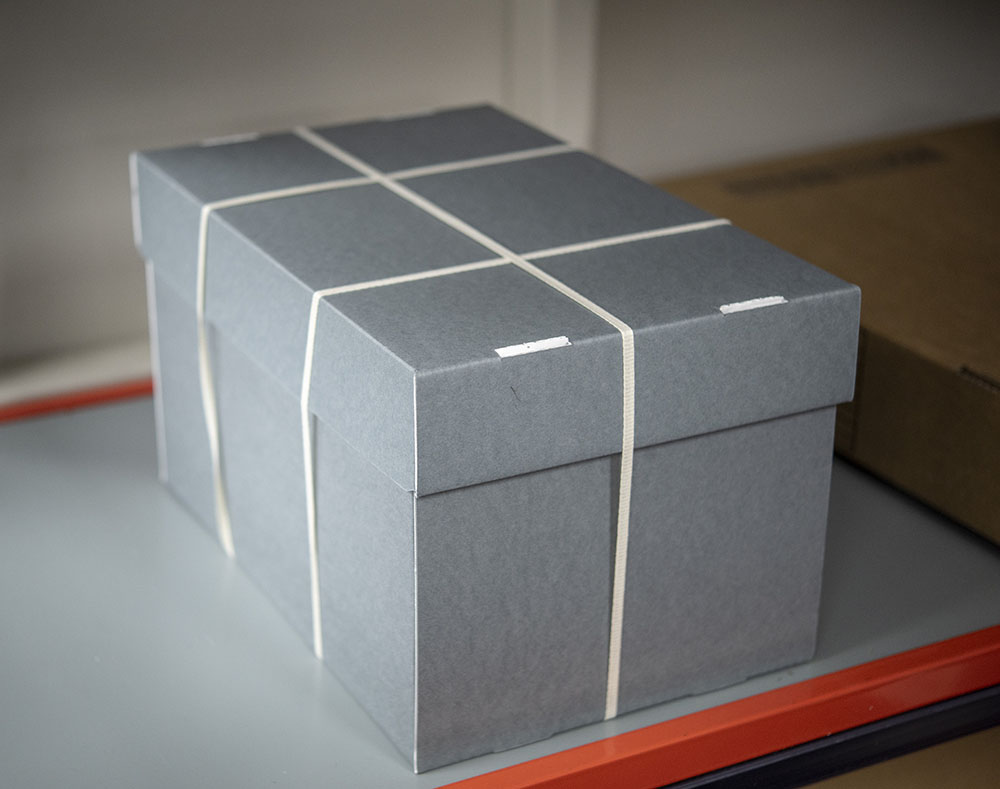
Photographic Material
Photographic materials should be separated into type as they have different chemistry which can interact and cause damage. It is particularly important to identify and separate any acetate or nitrate film as these types of films are unstable; more contemporary film made of polyester is inert and can last up to 500 years if properly processed and stored.
Photographic film is best stored in a dry, consistent and dark environment (i.e. away from the light, temperature and humidity fluctuations).
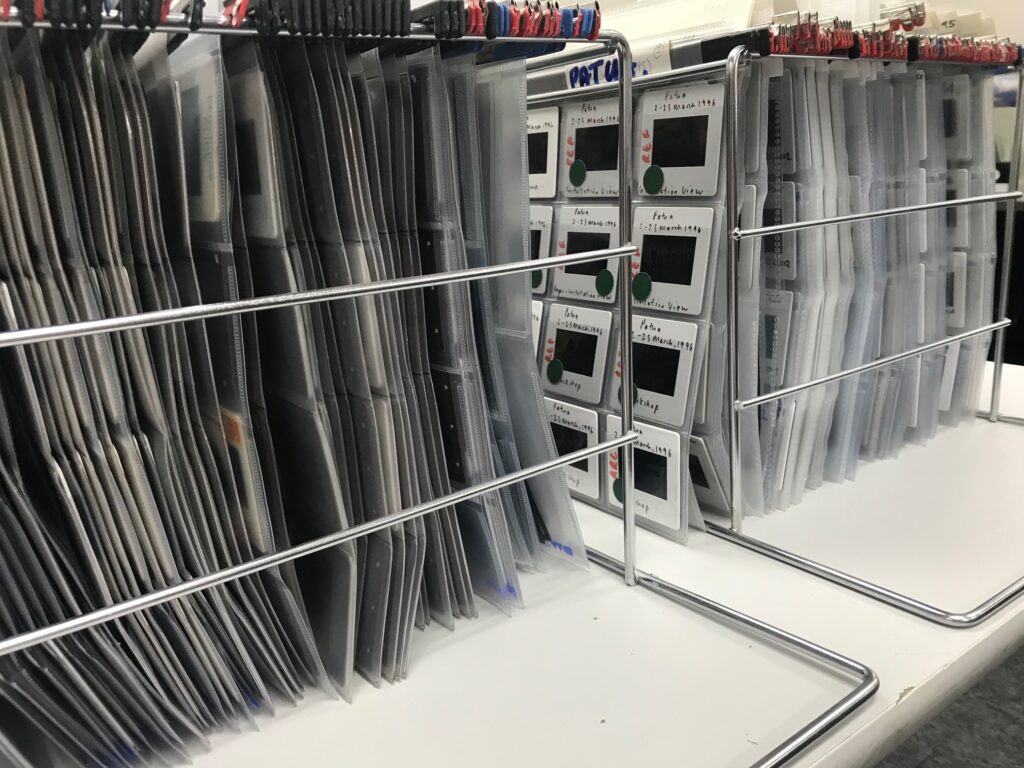
The time it takes for film to degrade is dependent upon the substrate, the original quality of its processing, the temperature and the relative humidity. For the latter two aspects, the lower both are, the longer the film will last. If photographic material needs to be exposed to light, which is necessary during digitisation, avoid natural light and return items to their packaging as promptly as possible, covering them during your workflow.
3D Objects
Three dimensional objects should have specific housing made, ideally a custom box with foam cut to shape to fit their specific shape and covered in Tyvek to best protect them from bumps, shakes, chafing and other potential hazards.
Where textiles were previously rolled it is best to store them on bolsters or rolled (not too tightly) in boxes e.g. rugs. Garment textiles need a lot of support to avoid creasing, this can be achieved with lots of tissue paper. Roughly roll tissue into sausages (a very technical term) to pad out collars, sleeves, pleats, and any other folds. Place sheets of tissue between layers and / or other garments within an acid-free costume box.
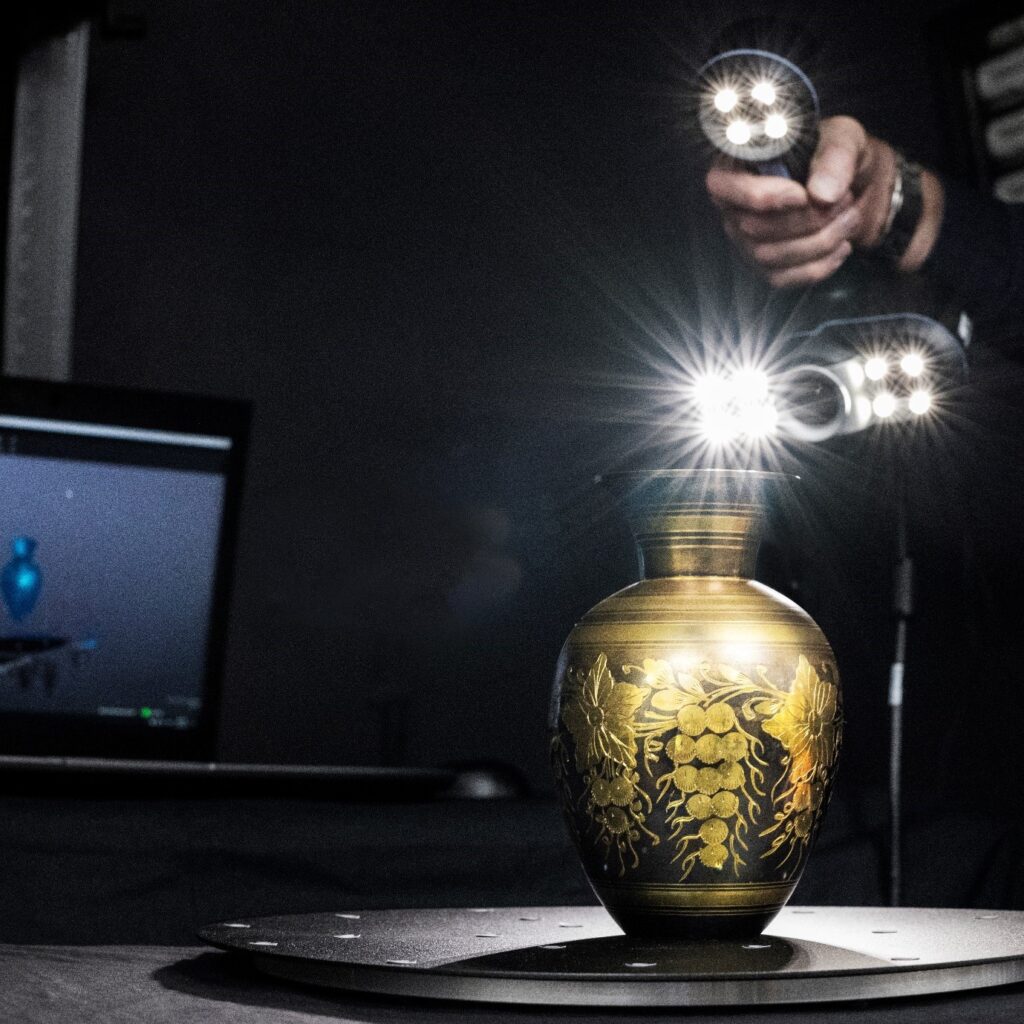
Analogue audio and video (AV)
Clean storage and use conditions are paramount for storing and preserving AV material, especially for more exposed formats such as open reels and phonograph records that attract debris. To best extend the life of magnetic media, keep tapes in a controlled, cool (~20°C), dry (~40% RH) environment, away from sunlight and stray magnetic fields.Prolonged exposure to moisture can cause mould to grow and the binder in magnetic tape to breakdown (often referred to as sticky-shed syndrome), rendering the tape unplayable without temporary repair by “baking” (a process that draws the moisture out).
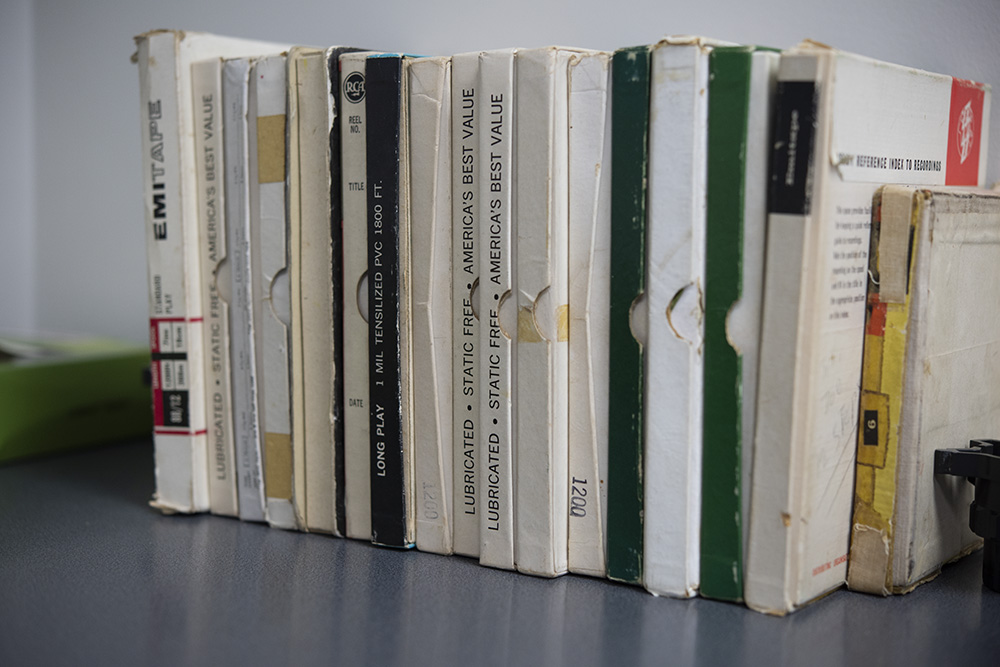
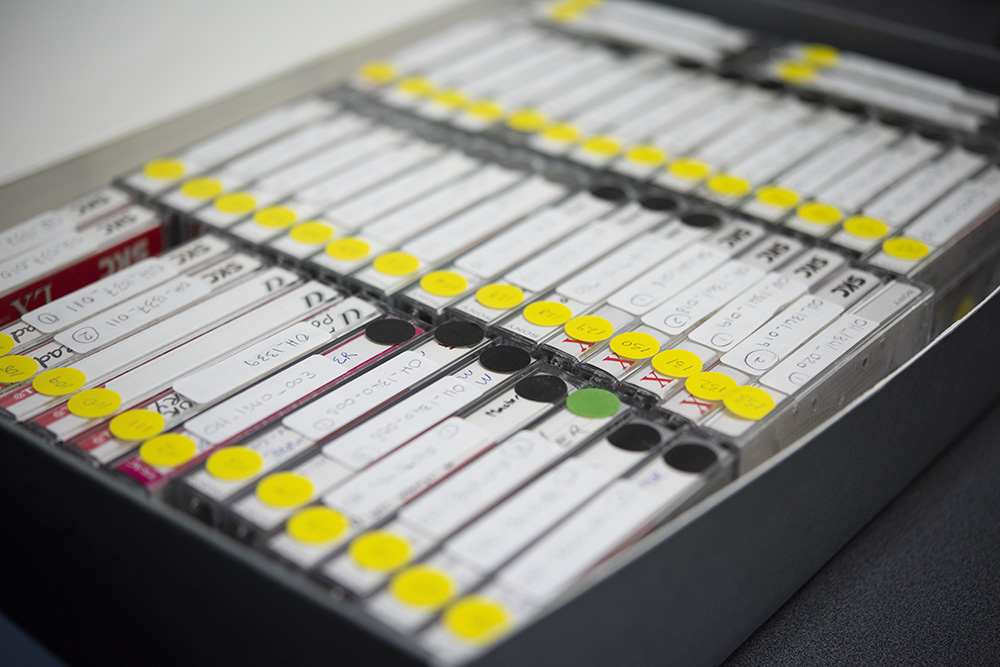
Tapes and records should be stored on end (not laid flat) to protect the tape edge and the grooves, respectively. Storing and transporting tapes vertically, in containers that support the hub, and padded with shock-absorbing materials also helps prevent damage from pressure on the flanges and any form of impact.
The cleanliness of the inner workings of any playback or reformatting devices is also critical.
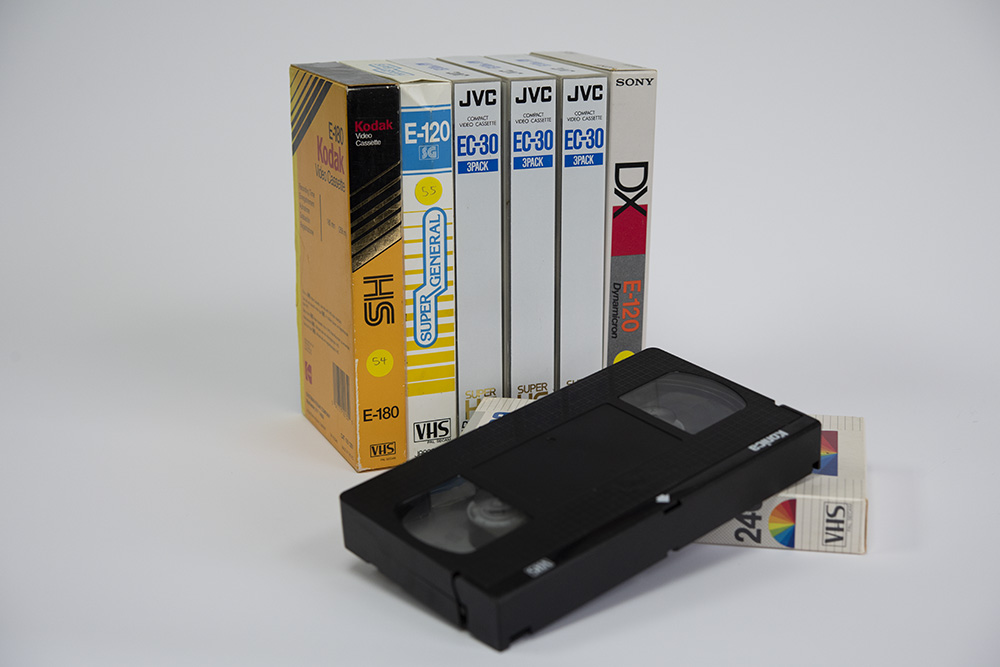
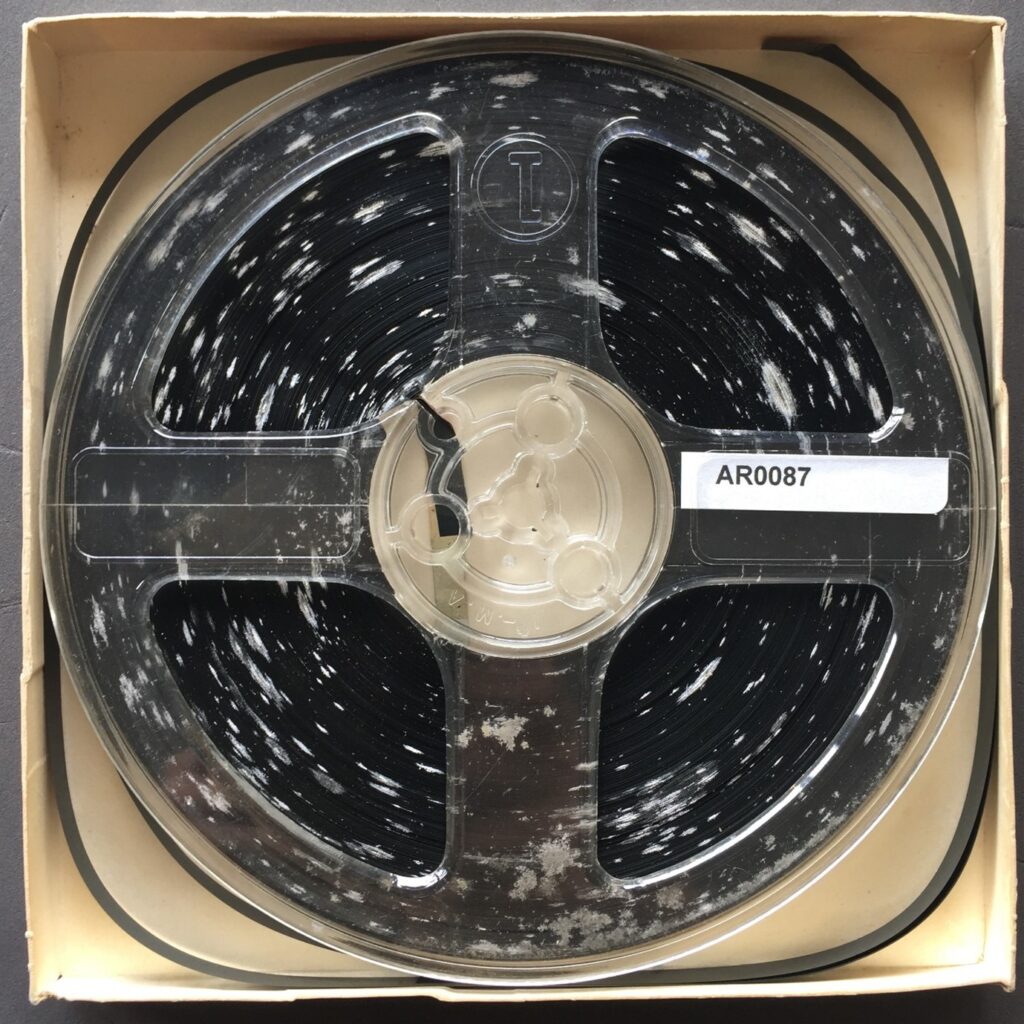
Packaging
The risks to items in transit are substantially higher than when they are in secure storage. Best practice is to only handle cultural heritage material when and where necessary. However, when items need to be moved, proper precautions should be taken. If the objects are going offsite – whether on loan for exhibition, digitisation or conservation purposes, it is important to consider the packaging method being used. Each type of item has different risks and considerations regarding packaging materials.
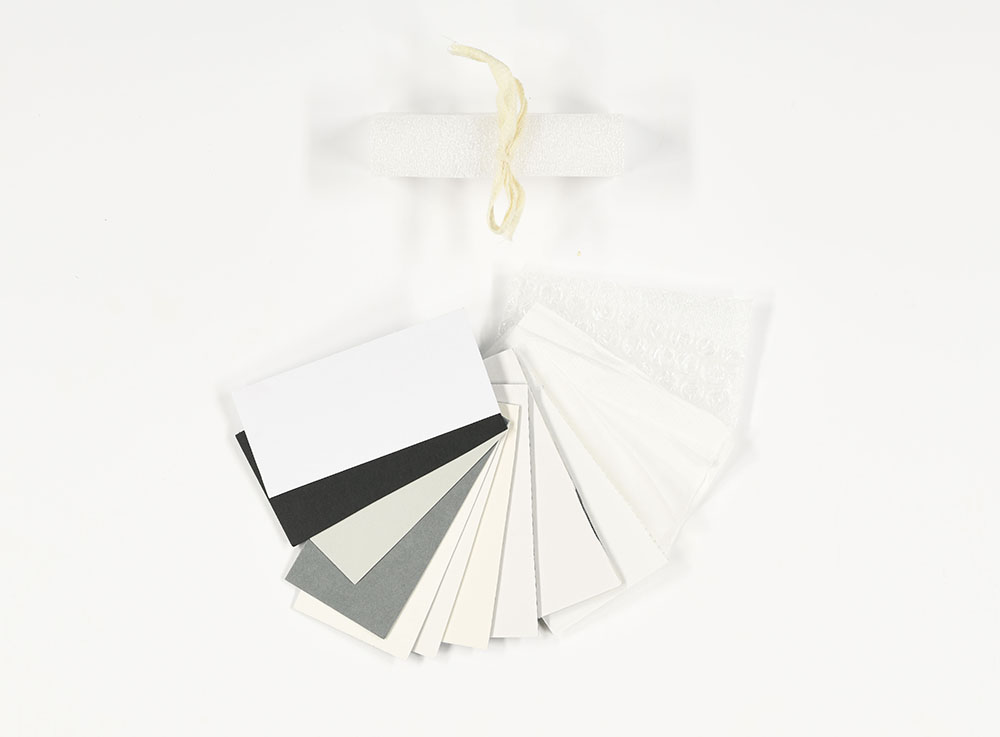
Packaging materials should not pose undue risk to an item. As such, it is important that your materials are inert – the makeup of the materials themselves should not be potentially damaging to the condition of your items. It is best practice to use acid-free packaging, especially for materials that are in direct contact with items. The terms “acid-free” “conservation” and “archival” are used to describe packaging materials that are inert and thus recommended for long-term storage of cultural heritage materials. There are a wide variety of packaging materials available for cultural heritage items that vary depending on their requirements.
Packaging materials should be used with the smoothest side toward the object, i.e. tissue paper’s glossy side, bubble wrap’s flat side. Certain materials will need more support and attention than others. These include but are not limited to photographic and audio-visual material. For example, glass plates need additional (foam) padding and should be packed carefully to reduce risk of shock and vibration.
Packaging Materials
- Cotton tape is a thin flat unbleached non-adhesive tape used as an alternative to adhesive tapes. It is used to create handles for housing and to attach labels to items. Adhesive tape (especially parcel tape) poses one of the greatest risk as it can get stuck to and remove surfaces of items. Adhesives are generally also acidic, which causes degradation, think of yellowing tape that has peeled off the back of a picture frame. If you must use adhesive tape on packaging (never on cultural heritage material) masking tape is best as it can be easily removed. Fold ends in to make for quick disposal; remove and dispose of all tape while unwrapping objects to remove risk of it sticking.

- Envelopes come in many sizes and are used for storing archival and photographic material.
- Card (of varying thicknesses or gsm) can be used to support the back of fragile items or create custom envelopes or boxes.
- Polyethylene foam comes by the roll or in thick sheets that are layered so they can be stepped into levels. The roll form is a thin spongey foam used for padding within boxes or drawers, the sheets can be used as bricks for propping up artwork, nesting or padding out boxes.
- Ethafoam is a polyethylene foam that comes in thick layered sheets. It can be used to absorb shock to an object that may occur during transportation.
- Fluted polypropylene board or boxboard are generally used for creating storage boxes.
- Tissue paper generally comes in buffered (one side is glossier and slightly less abrasive – this side should be touching the item) or unbuffered (both sides the same). Tissue paper is primarily used as a barrier between items and / or pages.
- Tyvek is a water and dust resistant material that is breathable and comes by the roll. It acts like a fabric which makes it great for wrapping items, creating inert cushions, textiles, covering furniture etc. Like buffered tissue it also has shiny and dull sides, with the shiny side recommended to be facing the item.
- Mylar / polyester is a transparent film primarily used to cover archival material (especially maps) to prevent damage but allow visibility.
- Negative sleeves are available, but are more of a short-term solution, as these are more likely to create issues if the storage environment isn’t carefully controlled.
- Bubble wrap is used as an outer layer (not usually in direct contact with the object). It is not intended as a long-term storage option as it isn’t very breathable but used when transporting objects for short periods. Tuff Wrap can be a good option as it doesn’t tear at the corners when transporting artworks.
- Glass tape is a thin wide adhesive material applied only to glass (framed artworks etc., not photographic plates) when in transit. It should be removed after the item is relocated. When applying glass tape, cover as much of the glass as possible, making sure to avoid the frame (especially gilded frames), folding the edges under to ensure easy removal. If the glass is wider than the roll of tape, overlap it. If the glass were to break in transit it can be more easily removed and is less likely to damage the artwork beneath it.
- Dacron wadding is like a duvet inner and used to cushion objects, especially textiles.
Other Considerations
You should consider issues surrounding security, insurance, pest management and disaster planning policies being in place during storage and transportation. Generally, items remain under your control until placed on a transport vehicle (in your dockway) and will not be in the control of the destination custodian until they are delivered (and signed for) into their care. Which means you must think for three or more organisations in the process of transporting objects.
If there is evidence of pest activity or mould, isolate the items. Treatment such as freezing may be required to stop these issues from spreading to other items. If your institution’s policies require condition reporting, complete a report before packing the items for transport and after they are returned to your storage. Rights issues for example, Copyright, access rights, conditions of loan, and Creative Commons should be addressed prior to digitisation.
Further reading:
- Most of the materials mentioned in this article can be obtained via Conservation Supplies who will also advise you.
- For National Library New Zealand guidelines on “Caring for Your Collections” see this site
- For an illustrated guide to packaging and handling options see this resource from Auckland Art Gallery.
- For information on pest management see this site.
- For information on disaster planning, see Te Papa’s resource here.
- For an overview of preventive conservation and museum practice see the book: Buck, R. S., & Gilmore, J. A. (2010). Museum registration methods (5th ed.). Washington D.C., WA: Rowman & Littlefield Publishers.
Digitisation
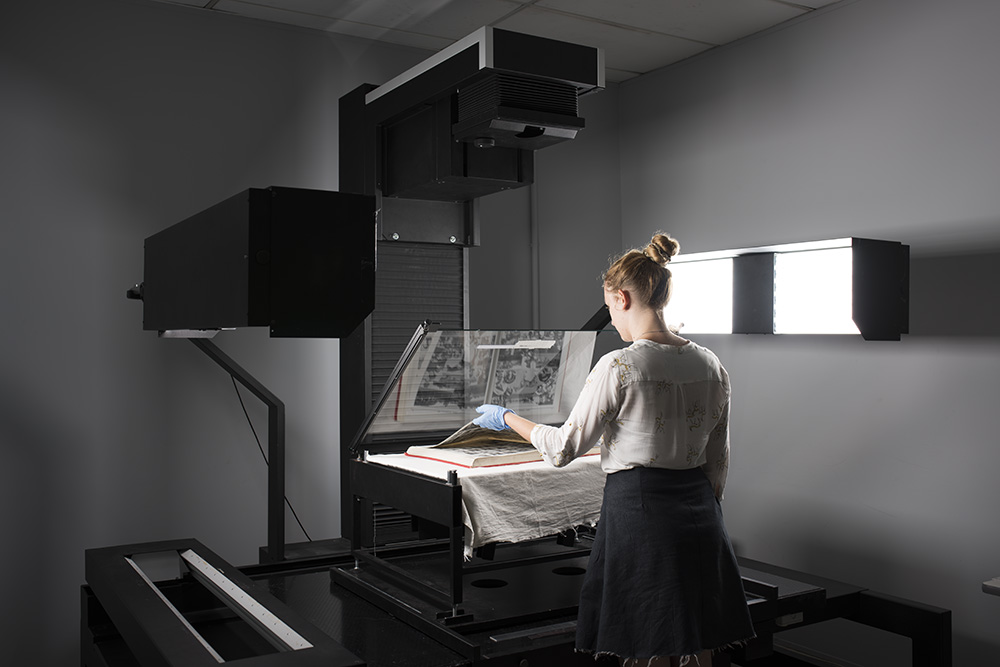
Before beginning a digitisation project, however small, it is important to consider the workflow set-up required to best protect your items. Put in place relevant supports for your items and follow handling and packaging advice discussed.
Equipment to consider when embarking on a digitisation project includes: high resolution scanners, cameras, computers, media storage devices, lighting, software, book cradles, copy stands, tripods, lightboxes, audio visual, plastic rulers (metal can scratch objects and equipment), measuring tapes, weights, an easel, backdrops, lenses, colour targets. View the NZMS supplied digitisation equipment here.
For more on digitisation strategy see our Determining a Digitisation Strategy resource.
To outsource the digitisation of your collection, view our services here.
Further reading
- https://digitalnz.org/make-it-digital/creating-digital-content/digitisation-resources
- http://www.micrographics.co.nz/designing-a-camera-rig-for-large-format-items/
- A series of guidelines from our National Library here
